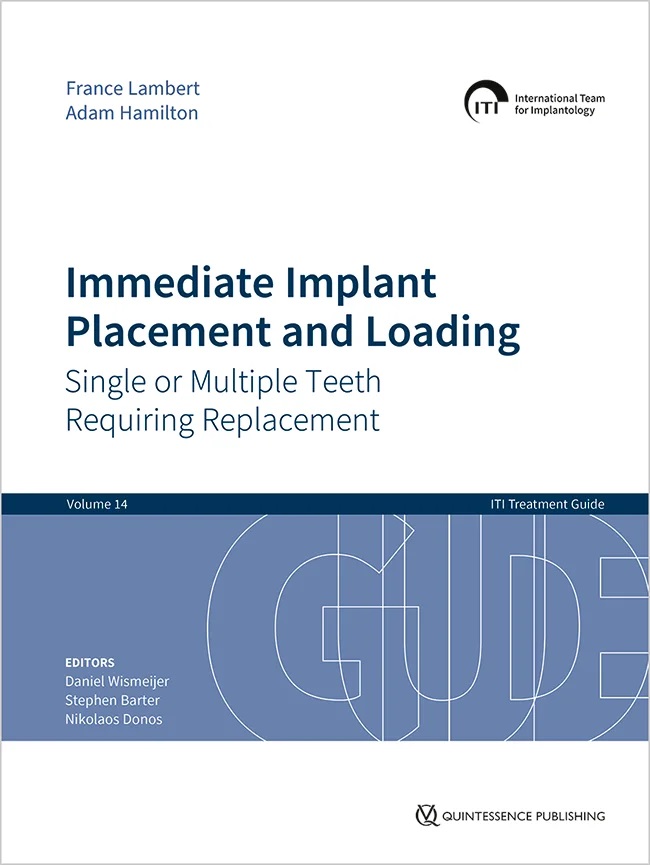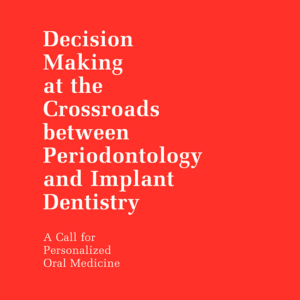Information
Dental implants are used routinely throughout the world to replace missing teeth. With the broadening of treatment options and an increasing number of clinicians that provide implant therapy, it is important to ensure that the treatment methods used meet the highest clinical standards.
The ITI Treatment Guide series is a compendium of evidence-based implant-therapy techniques in daily practice. Written by renowned clinicians and supported by contributors from expert practitioners, the ITI Treatment Guides provide a comprehensive overview of the various indicated treatment options. The management of different clinical situations is discussed with an emphasis on sound diagnostics, evidencebased treatment concepts, and predictable treatment outcomes with minimal risk to the patient.
Volume 14 of the ITI Treatment Guide series aims to provide a comprehensive overview on immediate implant placement and immediate loading protocols for replacement of single or multiple teeth requiring extraction. This volume outlines the current literature on immediate implant placement and immediate loading and elaborates on our understanding of the biology surrounding tooth extraction and osseointegration that underpin these treatment concepts. The importance of patient and site selection in conjunction with comprehensive treatment planning is highlighted and a risk assessment tool to aid decision making is provided. All key aspects of both the surgical and loading procedures are described in order to provide protocols that optimize the final treatment outcome. This volume also presents 9 step-by-step clinical cases performed by experts in the field, and typical complications of immediate implants are discussed, along with recommendations on how these can be prevented.
Contents
Chapter 1. Introduction
Chapter 2. Evolution of Immediate Implant Placement and Loading
- Evolution of Implant Placement Protocols
- Evolution of Implant Loading Protocols
- Current Concepts and Definitions of Implant Placement and Loading Protocols
- Proceedings of the 6th ITI Consensus Conference
- Proceedings of the 7th ITI Consensus Conference
- Evidence for Type 1A Protocols: Immediate Implant Placement + Immediate Loading
- Evidence for Type 1B Protocols: Immediate Implant Placement + Early Loading
- Evidence for Type 1C Protocols: Immediate Implant Placement + Conventional Loading
Chapter 3. Preoperative Analysis and Treatment Planning
- Patient Characteristics
- Esthetic Analyses and Esthetic Challenges
- Prosthodontic Planning
- Surgical Planning
- Risk Assessment Table with Indications and Contraindications
Chapter 4. Clinical Procedures
- Immediate Implant Placement
- Immediate Restoration
Chapter 5. Clinical Case Presentations
- Immediate Implant Placement and Immediate Provisionalization with a Prefabricated-Shell Provisional Crown
- Immediate Implant Placement to Replace a Fractured Central Incisor in a Young Patient and Management of Long Term Implant Infraposition
- Immediate Implant Placement and Restoration of a Maxillary Left Central Incisor with a Provisional Crown
- Immediate Implant Placement with Static Computer-Aided Implant Surgery and Immediate Loading in the Esthetic Zone with Prefabricated CAD/CAM Provisional Implant Restorations
- Replacement of a Maxillary Left Canine with a Cemented Crown on an Immediately Placed Bone-Level Tapered Implant Using a One-Abutment, One-Time Approach
- Guided Immediate Placement of a Ceramic Implant in a Maxillary Right Second Premolar and Immediate Restoration with a CAD/CAM-Fabricated Provisional Crown
- Replacement of a Mandibular Central Incisor with an Immediately Placed Monotype Zirconia Implant
- Immediate Replacement of Four Mandibular Anterior Teeth with a Conventionally Loaded Implant-Supported Fixed Dental Prosthesis
- Replacement of an Endodontically Compromised Mandibular Left First Molar with Immediate Implant Placement and a Sealing Socket Abutment (SSA)
Chapter 6. Complications
- Complications Related to Case Selection
- Complications Related to Surgical Procedures
- Complications Related to Loading Procedures
Chapter 7. Conclusions
Chapter 8. References
Daniel Wismeijer, Stephen Barter




